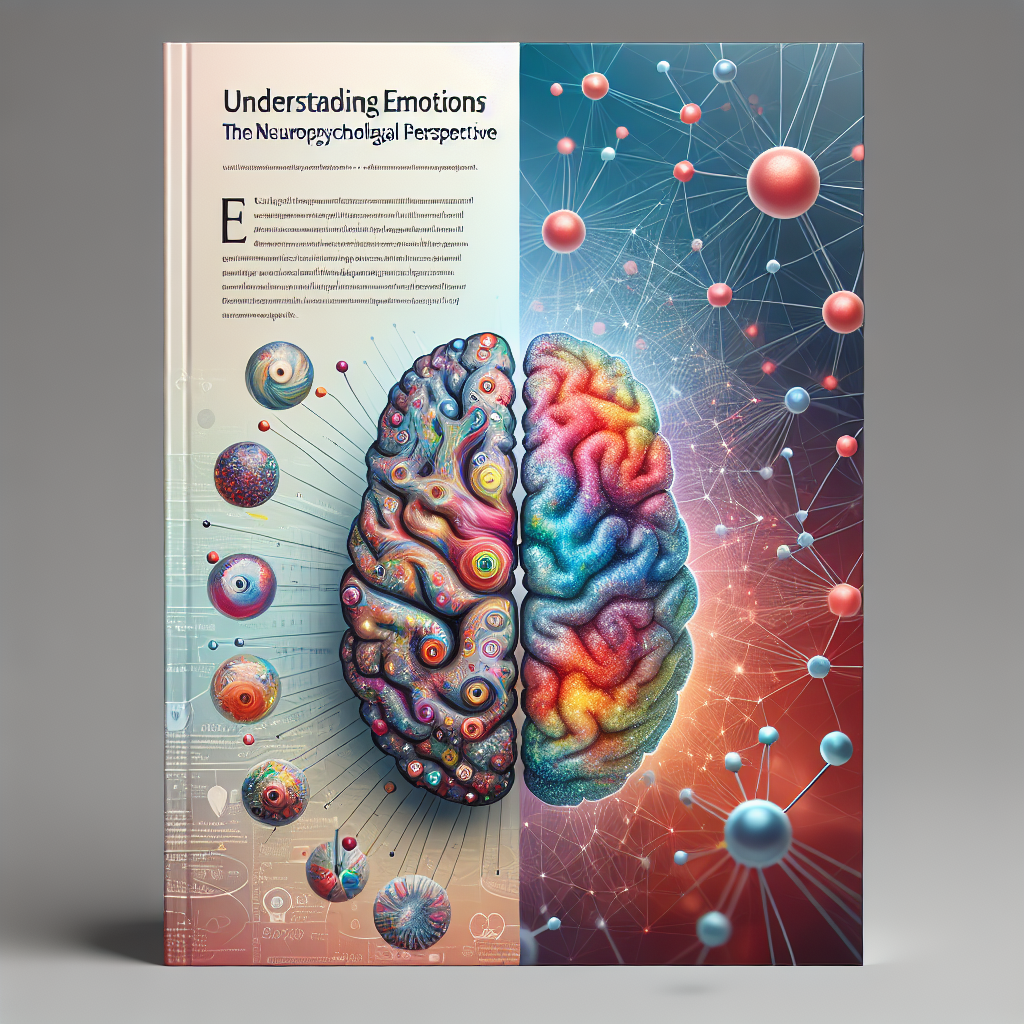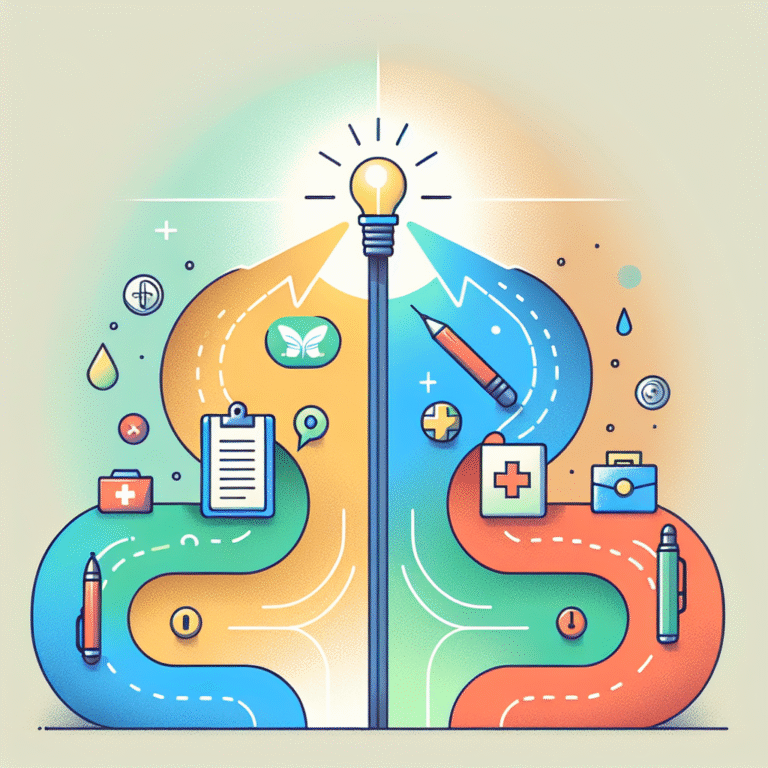
Introduction
Imagine sitting in a crowded room, laughter echoing around you, yet somehow you feel a creeping sense of loneliness. Or consider a moment when a song stirs a deep-seated sadness, invoking memories long buried. Understanding emotions isn’t merely a personal endeavor; it is a significant aspect of human experience that fuels our relationships, decisions, and overall well-being. In this article, we will explore the incredible world of emotional understanding through a neuropsychological lens, emphasizing why comprehending emotions is essential. By delving into brain structures, neurochemical reactions, and real-world applications, we aim to provide you with valuable insights into "Understanding Emotions: The Neuropsychological Perspective."
The Neuroanatomy of Emotions
Brain Structures Involved in Emotional Processing
To understand emotions from a neuropsychological perspective, we first need to familiarize ourselves with the brain structures primarily involved. Here’s a brief overview:
- Amygdala: Responsible for detecting emotional significance in stimuli. It assesses threats and triggers our fight-or-flight response.
- Prefrontal Cortex: Central to regulating emotional responses, the prefrontal cortex helps in decision-making and emotional control.
- Hippocampus: Associated with memory formation, it links memories to emotional responses, influencing how we feel about specific events.
- Insula: Plays a key role in consciousness and emotional awareness, helping us recognize feelings within ourselves.
Table 1: Brain Structures and Their Role in Emotions
| Brain Structure | Function | Emotional Aspect |
|---|---|---|
| Amygdala | Threat detection and fear response | Fear, anxiety |
| Prefrontal Cortex | Emotion regulation and decision-making | Control, ethical decisions |
| Hippocampus | Memory formation and retrieval | Nostalgia, emotional reflection |
| Insula | Awareness of emotional state | Introspection, empathy |
The Neurochemical Landscape
Hormones and Neurotransmitters
The emotional landscape is also shaped significantly by hormones and neurotransmitters. Chemicals such as dopamine, serotonin, oxytocin, and cortisol regulate our feelings and reactions.
- Dopamine: Often dubbed the ‘feel-good’ neurotransmitter, it’s linked to pleasure and reward.
- Serotonin: Regulates mood, anxiety, and happiness, with low levels often associated with depression.
- Oxytocin: Known as the ‘bonding hormone,’ it promotes social connections and trust.
- Cortisol: The stress hormone that prepares the body for fight or flight responses, excessive levels are linked to chronic stress and emotional dysregulation.
Case Study: The Role of Oxytocin in Trust
In a fascinating study published in Nature, researchers found that individuals given oxytocin showed increased trust in one another during monetary decision games. This highlights the integral role neurochemicals play in understanding emotions and relationships. The findings suggest that fostering trust can lead to healthier, more emotionally intelligent interactions.
The Influence of Trauma and Experience
Neuroplasticity and Emotional Responses
Our emotional framework is not static; it evolves based on experiences. Neuroplasticity highlights that our brain rewires itself in response to new experiences, including both positive and negative emotional stimuli. Understanding emotions, especially from a neuropsychological perspective, can enable therapeutic interventions that reshape emotional responses.
Case Study: PTSD and Brain Functioning
Research indicates that individuals with PTSD show alterations in the amygdala and prefrontal cortex functions. They may have heightened amygdala response and reduced control from the prefrontal cortex, contributing to emotional dysregulation. Therapies such as cognitive-behavioral therapy (CBT) aim to recalibrate these structures, fostering healthier emotional processing.
Understanding Emotions through the Lens of Social Interactions
The Social Brain Hypothesis
Humans are inherently social beings, and understanding emotions plays a critical role in navigating relationships. The Social Brain Hypothesis posits that the complexity of human social interactions has shaped our brain’s development.
Empathy: The Emotional Connector
Empathy allows us to feel and understand what others are experiencing emotionally. Neuroimaging studies reveal that specific brain regions activate when we empathize with someone else’s pain or joy, indicating our neurological wiring for social emotional connections.
Case Study: Empathy in Action
A study conducted by Decety and Jackson revealed that when participants observed others in pain, their brains activated in the same regions implicated in pain perception. This mirrored response emphasizes the neuropsychological roots of empathy, reinforcing the importance of understanding emotions in fostering compassionate social environments.
Emotional Regulation: Strategies for Mastery
The Art of Emotional Regulation
Understanding emotions—especially how to regulate them—is crucial for mental health. Emotional regulation involves strategies that help individuals manage their emotional experiences, improving resilience and interpersonal relationships.
Common Strategies Include:
- Mindfulness: Promotes awareness of present feelings without judgment, allowing for better emotional processing.
- Cognitive Reappraisal: Involves changing the interpretation of a situation to alter its emotional impact.
- Expressive Writing: Journal reflections on emotions can help process and understand emotional responses.
Table 2: Emotional Regulation Strategies
| Strategy | Description | Benefits |
|---|---|---|
| Mindfulness | Present awareness of feelings and thoughts | Reduces anxiety, increases control |
| Cognitive Reappraisal | Changing the interpretation of an emotional event | Enhances resilience, alters emotional responses |
| Expressive Writing | Writing about emotions to clarify and comprehend them | Improves emotional insight, reduces stress |
The Role of Emotional Intelligence (EQ)
Why Emotional Intelligence Matters
Emotional intelligence encompasses the ability to recognize, understand, and manage your own emotions while also discerning the emotions of others. High EQ is linked to better relationships, enhanced job performance, and improved mental health.
Improving Your EQ
- Self-Awareness: Reflect on your emotional triggers.
- Self-Regulation: Practice emotional control techniques.
- Social Skills: Engage in active listening and practice empathy.
Case Study: Emotional Intelligence in the Workplace
A study conducted at the University of Pennsylvania found that leaders with high emotional intelligence tend to foster better communication and promote a positive workplace atmosphere. By understanding emotions from a neuropsychological perspective, they could guide their teams effectively, thereby enhancing overall productivity and satisfaction.
Conclusion: Empowering Your Emotional Journey
Understanding emotions from a neuropsychological perspective equips us with the tools to navigate our own feelings and those of others more effectively. By recognizing the intricate interplay of brain structures, neurochemicals, and emotional experiences, we can develop a more profound emotional intelligence.
Investing time in understanding emotions can lead to healthier relationships, greater resilience, and a richer, more fulfilling life. So, let this be your call to action: embrace the journey of emotional understanding.
FAQs
1. What are the main brain structures involved in emotions?
The amygdala, prefrontal cortex, hippocampus, and insula are key structures that process emotions.
2. How do hormones affect our emotions?
Hormones like dopamine and oxytocin enhance feelings of pleasure and connection, while hormones like cortisol can lead to stress and anxiety.
3. Can emotional intelligence be improved?
Yes, emotional intelligence can be developed through practices like mindfulness, self-reflection, and active listening.
4. What is cognitive reappraisal?
Cognitive reappraisal is changing the way you interpret an emotion-arousing situation, which can help alter its emotional impact.
5. Why is empathy important in social interactions?
Empathy allows us to connect deeply with others, strengthening relationships and fostering compassionate communication.
By exploring the vast landscape of emotions through this neuropsychological lens, we equip ourselves with understanding and tools that enhance both our personal and professional lives. Remember: the journey to understanding emotions is not just about self-discovery but also about creating meaningful connections with those around us. Embrace it!














